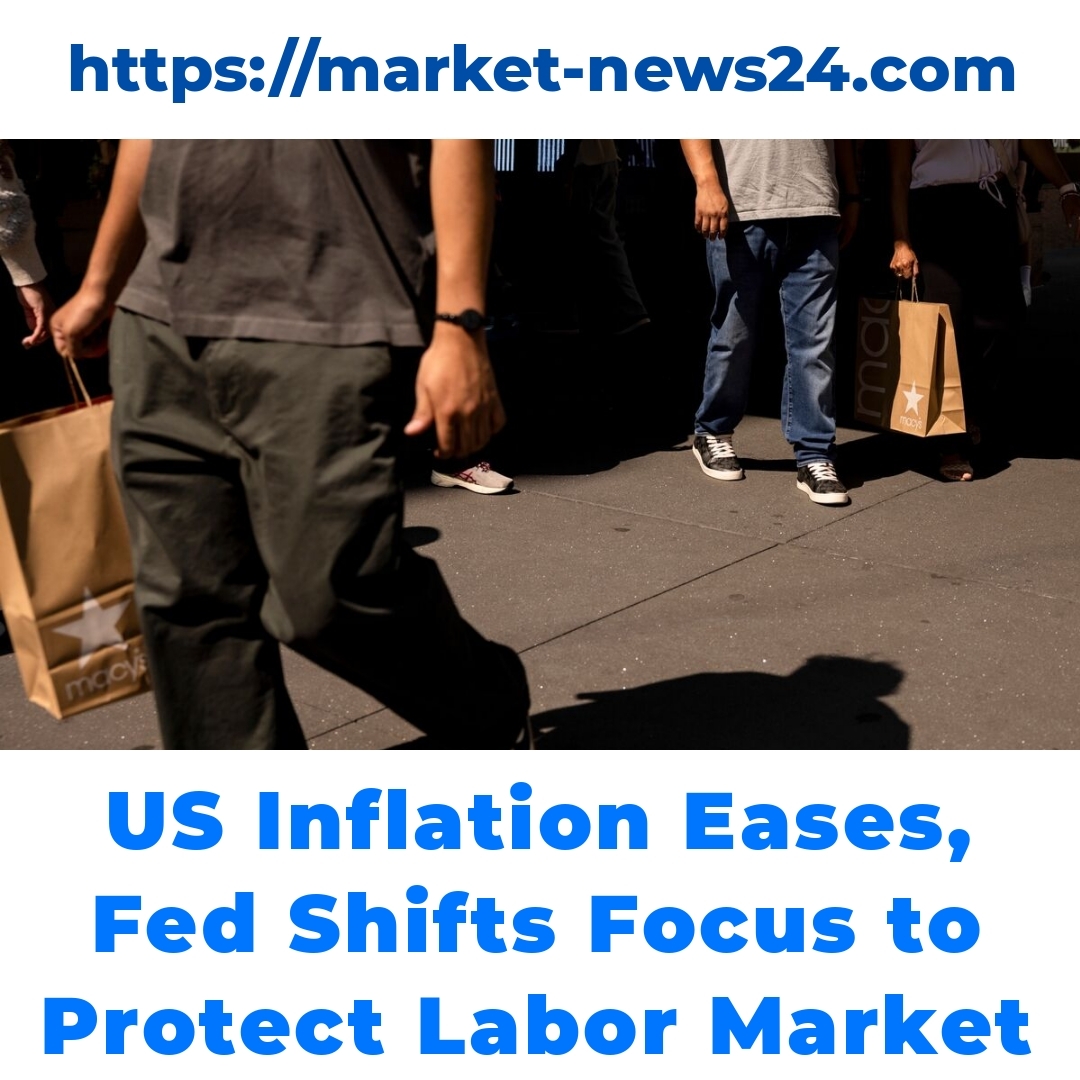US inflation has become a critical topic in today’s economy, as trends indicate a recent moderation in rates. Understanding the dynamics of inflation is essential, particularly in relation to the Federal Reserve’s strategies. This article will explore the interplay of inflation, labor market conditions, and the implications of Federal Reserve policies.


Overview of US Inflation
What is US Inflation?
Inflation in the US refers to the rate at which the general level of prices for goods and services rises, causing purchasing power to fall. It’s like when you go to the store and notice that the price of your favorite cereal has suddenly increased. This increase in prices can impact everything from the cost of living to the overall health of the economy. Monitoring inflation rates is crucial because it helps individuals and policymakers understand the economic landscape. When inflation rises too quickly, it can lead to higher interest rates and impact spending and saving behaviors.
Current State of US Inflation
As we wrap up the third quarter of 2023, recent trends show a moderation in US inflation. Economic indicators such as the Consumer Price Index (CPI) reflect this shift, suggesting that while prices are still higher than they were a year ago, the rate of increase is slowing down. This change is significant as it may ease the burden on consumers and businesses alike. Keeping a close eye on these trends helps us gauge the overall economic health and how the Federal Reserve might respond.
Federal Reserve Policy Adjustments
Overview of Federal Reserve Policy
The Federal Reserve, or the Fed, is the central bank of the United States, and its monetary policy plays a vital role in managing economic stability. The Fed adjusts interest rates and uses various tools to influence the money supply and maintain stable inflation. Ultimately, the goal is to keep the economy on a steady path—encouraging growth while avoiding higher unemployment and excessive inflation.
Recent Changes in Federal Reserve Policy
Recently, the Federal Reserve has made some strategic moves to combat inflation. One key focus has been on protecting the labor market while managing inflation rates. This means that as the Fed considers changes in interest rates, it also evaluates how these decisions affect employment opportunities. By being cautious in raising rates, the Fed aims to ensure that the labor market remains strong, helping families and households maintain their livelihoods.
Impact of US Inflation on the Labor Market
How US Inflation Impacts the Labor Market
US inflation directly affects the labor market in various ways. When inflation rises, it can lead to uncertainty for both employers and employees. Companies might hesitate to hire new staff or offer raises due to increased costs. Conversely, as prices rise, workers may demand higher wages to keep up with their living expenses. This tug-of-war can create fluctuations in employment rates and job security, making it essential for both the Fed and businesses to navigate inflation wisely.
Influence of Economic Trends on Employment
It’s interesting to see how economic trends can influence employment patterns. When inflation rates are high, businesses might slow down hiring or even consider layoffs, impacting job availability. On the flip side, low inflation can stimulate job creation as companies feel more confident in their financial stability. Keeping an eye on economic indicators helps us understand these trends better and their subsequent effects on the labor market.
Economic Indicators and Third Quarter Data
Key Economic Indicators
There are several crucial economic indicators that help gauge the health of the economy. Some of these include the Consumer Price Index (CPI) and the Producer Price Index (PPI). These indicators track price changes and can act as a guide for Federal Reserve policy decisions. Monitoring these indicators is essential for understanding inflation trends and how they affect consumers and businesses alike.
Analysis of Third Quarter Economic Data
Looking at the economic data from the third quarter of 2023, it’s clear that inflation trends are stabilizing. This stability can potentially ease concerns for consumers and workers alike. By analyzing how inflation is trending, we can infer its impact on both the broader economy and the labor market. Economic growth appears to be picking up, which bodes well for job opportunities.
The Future of US Inflation and Labor Market Policies
Predicted Trends in US Inflation
As we look ahead, insights into possible future inflation rates suggest that while inflation may stabilize, it’s unlikely to return to pre-pandemic levels. The Federal Reserve will likely continue to adjust its strategies to maintain a balance, focusing on curbing inflation while supporting a healthy labor market. Predictions can be tricky, but it’s clear that ongoing monitoring is needed.
Long-term Effects on the Labor Market
The long-term effects of ongoing inflation could reshape labor market dynamics significantly. If inflation persists, wages may have to rise to keep up with living costs; however, businesses may struggle to absorb these increases without affecting profits. The Federal Reserve’s continuing role in moderating inflation is key to ensuring that the labor market remains resilient and can adapt to these economic conditions effectively.
Conclusion
In summary, understanding US inflation, the Federal Reserve’s policies, and their implications for the labor market is critical for grasping the current economic environment. As trends show a moderation in inflation rates, it’s essential for consumers, businesses, and policymakers to stay informed. This information will empower individuals to make better decisions and adapt to the evolving economic landscape. Remember, staying up to date with economic trends can help you anticipate changes that may impact your daily life and financial wellbeing.
What is US Inflation?
US inflation is the rate at which the prices of goods and services rise, which makes your money buy less than before. For example, if your favorite cereal costs more than it did last month, that’s inflation affecting your purchasing power.
Why is monitoring inflation important?
Monitoring inflation is crucial because it helps both people and policymakers understand the economic landscape. High inflation can lead to increased interest rates and impact how much people spend and save.
What is the current state of US inflation?
As of the end of Q3 2023, inflation rates in the US have shown signs of moderation. While prices are still higher compared to last year, the rate at which they are increasing has slowed down, potentially easing the financial burden on consumers and businesses.
How does inflation affect the labor market?
Inflation has a direct impact on the labor market, influencing both employers and employees. Companies may hesitate to hire new workers or give raises when costs are rising, while employees might demand higher wages to cope with increased living expenses.
What are key economic indicators related to inflation?
- Consumer Price Index (CPI)
- Producer Price Index (PPI)
These indicators help gauge the health of the economy and inform Federal Reserve policy decisions regarding inflation monitoring.
What are the predicted trends in US inflation?
Although inflation may stabilize in the future, it’s unlikely to return to the lower rates seen before the pandemic. The Federal Reserve will continue to adapt its strategies to balance curbing inflation with supporting a healthy labor market.
What are the potential long-term effects of ongoing inflation?
If inflation continues, wages may need to rise to keep up with living costs. However, businesses may find it challenging to balance these wage increases with their profits. The Federal Reserve’s role in managing inflation will be key to ensuring the resilience of the labor market.





